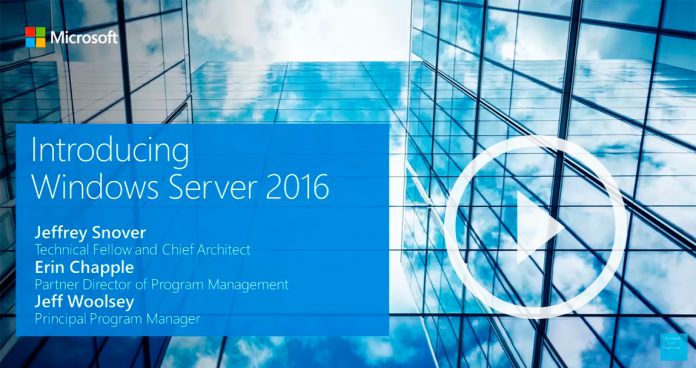1 Windows Server Insider Preview 162372 Nano Server Changes
Build 16237 gives dedicated users an early look and the OSes latest improvements, allowing them to prep for the transition and provide essential feedback. This release is a lead up to Windows Server version 1709, which be available to everyone in September. It’s available to both Windows Insider for Business users and general Insiders.
Windows Server Insider Preview 16237
Microsoft has gone big in its first build, with a ton of new functionality and plenty more enhancements. Here’s the full list of changes:
“Persistent Memory can now be exposed to Hyper-V VMs: In this build, NTFS-formatted direct access volumes that are created on non-volatile DIMMs can now be exposed Hyper-V VMs. This enables Hyper-V VMs to leverage the low-latency performance benefits of Persistent Memory devices. PowerShell can be used for the creation and management of Virtualized Persistent Memory. Battery Passthrough: With new additions to Set-VM, a PowerShell cmdlet, you can now enable and disable Battery Passthrough, a new feature. Battery Passthrough let your VMs have the same battery state as the host they are on. Improvements to Container Networking: This build introduces enhancements to container networking to better support Kubernetes by adding support for multiple containers (w/out Hyper-V isolation) to a single Pod (Network Compartment) as well as only requiring a single endpoint per Pod for all traffic types (e.g. ingress and East-West) The Host Networking Service (HNS) now has support for creating ACL, NAT, and Load Balancing network policies for Container endpoints for fine-grained policy application. RDMA for Trusted Guests Improvements to Software Defined Networking: Encryption can be enabled for virtual network subnets to protect your traffic from anyone with physical access to the wire, including network administrators. Failover time for SDN gateways is improved. Now, you will observe much faster failover times for the gateways, even with high number of connections. Access control lists can be applied for infrastructure on logical subnets. Improvements in Networking transports: 2X throughput improvement for single connection TCP and UDP performance in low latency intra-datacenter scenarios Default congestion control algorithm CUBIC for high speed networks Improvements in HTTP(s): SSL throttling to enable predictable service for established connections, in the face of high incoming SSL traffic. Deterministic certificate updates for HTTPS enabling greater service availability. Improvements in time accuracy: Win32tm improvements in RS3 support greater time accuracy, and jitter is removed from the measurements that calibrate the service. New system event logging lets you archive time service data to support traceability compliance. System center monitoring now includes a new rule which lets you detect when a machine in your environment is out of compliance.”
Nano Server Changes
As announced last month, changes are coming to Nano Server. In this build, Microsoft has optimized Nano Server for containers and made it available as a container only option. This has resulted in the removal of several features from the base image, including PowerShell, WMI, .NET Core, and more. Naturally, this also results in a reduction in image size. How much is not yet clear, but we do know that the Windows Server Core base image has also seen a 20% reduction. You can get hold of the latest Windows Server build here, and read more about known issues on the Windows blog.




